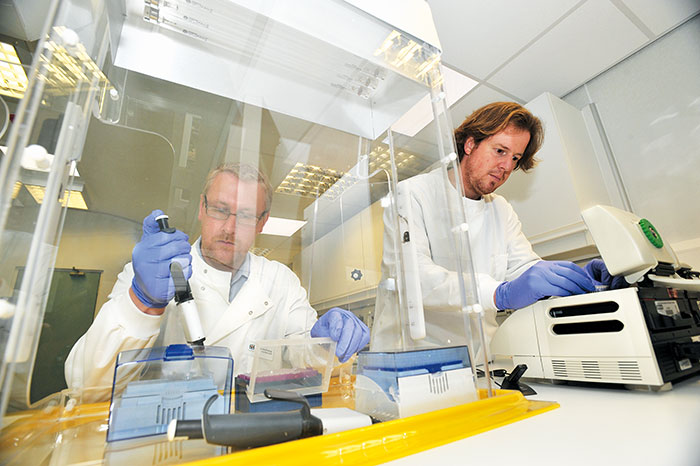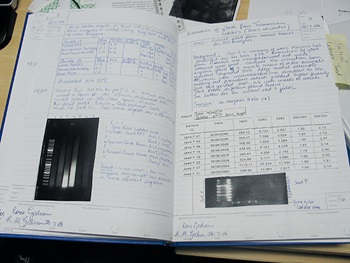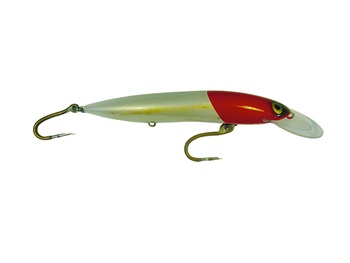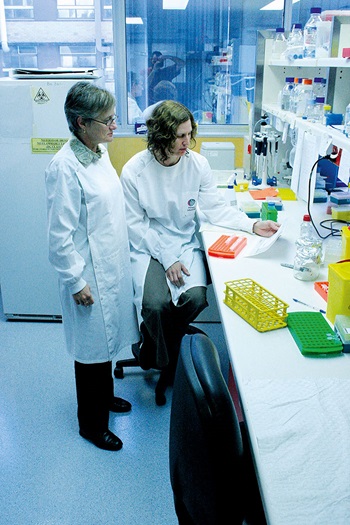A new FRDC report examines the role that current and developing genetic technologies can play in addressing some of the key issues involved in the exploitation of wild fisheries
 Scientists at the TRACE Wildlife Forensics laboratory use genetic testing to determine the origin of seafood for the Marine Stewardship Council.
Scientists at the TRACE Wildlife Forensics laboratory use genetic testing to determine the origin of seafood for the Marine Stewardship Council.Photo: Marine Stewardship Council
By Bianca Nogrady
Genetic technology provides a powerful new tool to understand how wild fish populations live, grow and change, and help ensure the long-term sustainability of wild fisheries.
Genetic technology has an enormous amount to offer the industry, from those in the fisheries right through to the consumer, FRDC executive director Patrick Hone says.
“People thought you could only use it to identify fish species or to work out some sort of population information, but now the technology for genetics has advanced so much and is getting so cheap, we’re using it for many different things,” he says.


“We’re using it for compliance in supermarkets, looking at stock substitution fish species. We’re using it for a much better detail in terms of population estimates. We can actually use genetics to tell us how many animals and fish are out there in the ocean. We can use it to understand how fish populations move.”
The application of genetic technologies to wild fisheries management has been around for half a century, having originated in the North American salmon fishing industry, says geneticist Jennifer Ovenden, co-author of the report Scoping current and future genetic tools, their limitations and their applications for wild fisheries management. Its use in Australia is a more recent development, but genetic technology is rapidly proving its worth.
“In Australia, genetics is important because most of the species in Australia are relatively new to science and we know comparatively little about them,” says Jennifer Ovenden, who is based at the University of Queensland’s Molecular Fisheries Laboratory.
“In the northern hemisphere, scientists have been working on species for hundreds of years and they’ve accumulated a massive amount of information. But in Australia, if you want to harvest a new commercial species you’ve got to know some very basic facts about its biology,” she says.
One of the most common uses of genetic technology is to look at the number of populations within a particular fish species. Populations are biological stocks, which are the basic unit of fisheries management. They can be discovered by the presence or absence of certain genetic markers, such as particular sequences of DNA.
Genetic data complements data from other methods such as examining parasite abundance or looking at the biochemistry of otoliths (a tiny bone in the fish ear).
Same species, but different
Information on the structure of fisheries stocks is important because harvesting tends to occur on a particular population and these populations are not always well connected. For example, Gemfish in eastern and southern Australia consist of two populations – one on the eastern coast and another on the southern coast.
“The populations appear to connect around the Bass Strait area but genetically they’re quite different. The implication is that the east coast Gemfish don’t hang out on the southern coast and the southern coast Gemfish don’t hang out on the eastern coast,” Jennifer Ovenden says.
This has implications for management because if one population gets overfished, it may not be replenished by fish from the other population. It also affects the mathematical population models that fisheries managers use to assess and predict the abundance of fish species.
“Those models work best if you’re applying them to a single population,” Jennifer Ovenden says.
“If you had one model that spanned the eastern and the southern Gemfish populations, it wouldn’t work, because each of those populations probably has different biological parameters.”
The use of genetic information to determine stock structure has been used in a wide range of species, from sharks and Pink Ling to prawns and abalone. It’s one of 11 key genetic themes that the FRDC report has identified. Each theme covers a particular genetic sub-discipline that addresses specific biological or management questions relevant to fisheries.
Some of the themes include the use of genetics for species recognition, to detect disease in wild fisheries, to examine the genetic effect of captive-bred fishes on wild populations and to explore the impact of fishing and natural selection. This last theme is one of particular significance to Australian fisheries, according to Jennifer Ovenden.
Fishing changes populations
“We were surprised to find that in Australia we don’t pay much attention to the way that fishing can affect populations,” Jennifer Ovenden says.
“You can take out all of the large individuals in the population, which is what you normally do when you go fishing, but there will be long-term effects if you keep doing that generation after generation.”
Over a number of generations, the total body size of those fish may decline because the larger fish are being removed, leaving the smaller ones to do the spawning.
“Apart from the fact that you have fewer big fish to catch, the smaller fish that remain produce fewer eggs, which means that, overall, the total number of fish available in that population is quite low.”
She says genetic technology can advance our understanding and monitoring of fisheries-induced selection.
“For example, whole genome sequencing can help identify genes under selection, and there is a growing list of genes associated with particular functions that are affected by environmental and other selection pressures.”
Patrick Hone says this is also important with respect to climate change. “Climate change may lead to genetic changes, for example, increased tolerance to higher water temperatures,” he says.
While there are concerns that fish will struggle to adapt to climate change, evidence suggests they are already adapting, and far more quickly than expected.
“We often assume that species don’t adapt in the short term, but these things move quicker than we think they do – fish have much shorter life cycles, so where we live 90 years, they can turn over every five to six years.”
Genetic awareness
The report looked at much more than just the science and application of genetic technology.
It also qualitatively examined attitudes to, and understanding of, the applications of genetic technology among a range of stakeholders, including geneticists, fisheries scientists and managers, and industry representatives.
For Jennifer Ovenden, two findings in particular stood out. The first was that fisheries scientists, managers and policy makers had a positive attitude to the kind of data generated by genetics.
“As a worker inside the field of genetics, it’s hard to get a feeling for how it is perceived by others. It was great to know that there were people out there who were on top of it and interested in it, and really keen to make use of it,” she says.
The second finding was that the report authors were able to identify the 11 broad issues affecting those stakeholders, and how genetics could contribute to those issues.
“Nobody had ever done this before,” Jennifer Ovenden says.
“So if you’re a manager, you can see that table [of issues and technologies in the report] and work out how genetics can be useful. If you’re somebody inside the field of genetics, like me, you can see how genetics information is useful.
“Initiating this report shows that the FRDC is looking forward and is thinking in a very strategic way about the sound management of our fisheries.”
From Patrick Hone’s perspective, it was important to understand what research was happening and how it was being applied, and to identify areas of need.
“In science, what you’re wanting to do is foster a balance of investment in everything from applied all the way to pure science,” he says.
“The applied bit, we’re already doing that pretty well, but this report focuses us a bit more on what we would call ‘blue sky’, or opportunity, science.”
Spanish Mackerel tagged for life
 Genetag lure
Genetag lure Although tagging fish for mark-recapture is costly, labour intensive and suffers from a high rate of tag loss, it remains one of the key techniques for estimating sustainable harvest rates and fish abundance.
The idea is that a certain number of fish are tagged – sometimes with two tags in case one drops off, which they often do. The number of recaptured fish relative to the number originally tagged can be used to estimate the harvest rate and the general abundance of the stock.
But tagging fish is not only a cost for fisheries managers, it also costs the fish, senior CSIRO research scientist Rik Buckworth says.
“When you catch that fish and drag it to the boat and handle it and let it go again, you compromise that fish – it has an increased probability of mortality due to that event.”
What if it was possible to tag a fish simply by taking a small sample of tissue without having to lift the fish out of the water and without having to attach a tag to it?
This is the idea behind Genetag. It uses a fish’s own genetic profile as a tag. To get this ‘tag’, researchers developed a special pliable hook that grabs a sample of tissue but lets the fish go.
Rik Buckworth and colleagues developed Genetag for use in Spanish Mackerel with great results. He says with genetic tagging you do not have to worry about tag loss; each fish tagged has a genetic identity for life.
“If you then sample a proportion of the catch and use DNA fingerprinting to look for those tagged animals in the landed catch, you’ve got the proportion of tagged animals that were caught.” This can then be used to estimate the harvest rate for that fish population.
Genetag has collected about 10,000 genetic samples from Spanish Mackerel and is now being used in sharks; a similar approach is being used in rockfish in North America.
FRDC Research Code: 2002-011
DNA identity checks prevent substitution
With increased awareness about the importance of sustainable fisheries, more consumers are choosing to buy their seafood from sustainable sources and looking to suppliers to guarantee the sustainability of their produce.
Fish substitution can be a problem for consumers and suppliers alike, particularly for skinned white fish fillets where any identifying features of the fish have been removed. However, genetic testing is helping retailers such as Woolworths to ensure successful implementation of their sustainable sourcing policy.
The head of corporate responsibility at Woolworths, Armineh Mardirossian, says the seafood supply chain can be quite long.
“We don’t always directly buy from the fishery so we need to have some sort of assurance that when we say to vendors that we want a particular stock from a particular location, because that’s more sustainable, that we get what we asked for.”
DNA testing usually involves comparing the DNA sequence of the specimen of interest with the species it is supposed to be. It allows for rigorous identity testing. Armineh Mardirossian says Woolworths is using DNA testing for particular ‘hot spots’ of fish substitution, such as Gummy Shark and eastern and western stocks of Gemfish.
The ability of DNA testing to differentiate between different populations within the same species has also helped the Marine Stewardship Council (MSC) verify that fish identified as MSC-certified was from a catch area where there is a sustainable fishery. This was particularly useful with Patagonian Toothfish catches, explains MSC’s product integrity manager, Alison Roel.
“Before the Falkland Islands [toothfish fishery] was certified, we were using a test differentiating toothfish from the Falkland Island and South Georgian fisheries. Because they were adjacent fisheries, we developed a test to differentiate between the two populations, and when we did the assessment of a sample of Patagonian Toothfish, we found that they all did come back as South Georgian.”
Telomeres tell more about fish age
 Genetic technology is a valuable tool in the management of wild fisheries, providing important new information about the structure of fish stocks.
Genetic technology is a valuable tool in the management of wild fisheries, providing important new information about the structure of fish stocks. How do you tell the age of an abalone? You can find one, measure its shell, tag it, then go back a year later and see how much it has grown. That would be fine if you can find it again.
While abalone don’t move around much, they are very good at hiding. They also succumb to age, disease and predators. The recapture rate for abalone is low.
Being able to age abalone, or any other animal, enables a better understanding of growth rates, which is essential for fisheries stock management.
Genetic technology is making the process of estimating the age of abalone, fish and other seafood much easier. The DNA at the ends of chromosomes are called telomeres, and they get shorter each time a cell divides. So scientists can get an estimate of an animal’s age from the length of their telomeres.
University of Queensland researcher Jennifer Ovenden and her colleagues tested the validity of using DNA as a biomarker for age in abalone and found a clear inverse relationship between telomere length and shell size.
The approach has yet to be trialled in the field, but it has great potential, she says.
“If researchers could go and sample 100 abalone, take a small tissue sample without killing them, then take that tissue sample back to the lab and get an instant estimate of the spread of ages amongst those abalone, it would be really valuable.”
Telomeres can also be used to age fish, which are currently aged by examining a tiny bone in the fish ear called an otolith. However, abalone and other molluscs do not have otoliths.
FRDC Research Code: 2002-011





